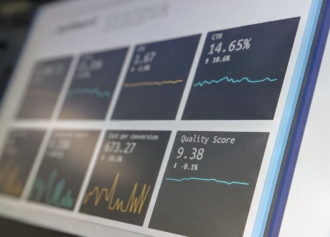You can’t measure something if you aren’t sure what it is.
While team productivity means different things depending on the business, department, and industry, there are some universal things it is not. For example, team productivity is not profitability, and it is not a measure of a team’s work output (because it is possible to be technically productive without adding any value to the company).
While different people and areas of the business define team productivity differently, there are some aspects of productivity that are widely accepted. Regardless of where and for whom your team works, you can use these benchmarks to measure productivity.
The essential definition of good team productivity in any work environment boils down to the amount of quality work (i.e., work that adds value) a team can produce within a reasonable amount of time (usually specified by the company).
Now that we have a broad definition of team productivity, how can we measure it?
Decide what team productivity means to you as a manager
Before you can measure the productivity of your team, you have to decide what team productivity means to you in your capacity as team manager. What do you expect your team to do in order to be considered productive? You can answer this important question by asking yourself a few smaller questions.
First of all, what is the primary goal of your team? Second, what will they need to do to achieve that goal? Third, when do you want them to achieve that goal?
As an example, if you want your team to produce 200 qualified leads in a month, you’ve already answered the first and third questions. Now, all you need to do is decide what your team will need to do to accomplish this goal in that time frame, and you have a solid definition of team productivity.
Create a few mini-goals for your team on the way to achieving their primary goal
You want your team to produce 200 qualified leads in a month. However, it is not a good idea to wait an entire month before checking to see how they are doing in meeting that goal. You want to check on them sooner, so you can be sure they are on track and, if they aren’t, so you can assist or encourage them.
You can check in with your team regularly without being intrusive or micromanaging. How? By creating mini-goals along the way to the overall goal. This helps you measure how your team is doing and encourages them to be more productive.
Dividing up the overall goal into smaller ones is a good way to start. You can, for example, give your team the mini-goal of producing 50 qualified leads each week. You might consider giving them rewards for meeting these short-term goals, to increase their motivation and overall productivity. Also, be sure to provide them with the tools they need to meet both these mini-goals and their overall goals so that they continue producing their best.
Identify the important benchmarks on the way to reaching the team’s overall goal
Examine other teams with the same or similar goals to yours. Learn from them. What did they do to achieve their goals? How did they measure their productivity? Did they reach their goals?
Using this information, along with other pertinent information from your company and past data on your team, you can establish a series of benchmarks for the team to meet to ensure they are being as productive as they need to be. These benchmarks also help your team to understand what you want from them, so they can work to reach your expectations.
Always measure
As a team leader or manager, you want to constantly measure your team’s productivity, and you need to do it in a consistent manner so your team always knows what to expect. A good way to do this is to assess their productivity as you have defined it each week. You can measure their overall productivity by comparing each week’s output to the next. Were they more productive one week, less productive another, and why?
When you measure consistently like this, you’ll be able to determine the factors that make your team more or less productive, and adjust the work environment and support they are receiving to help them reach your expectations. When you make measuring team productivity a regular part of your work activities, it becomes second nature, and your team will become better and stronger for it.














































































































Send Comment: